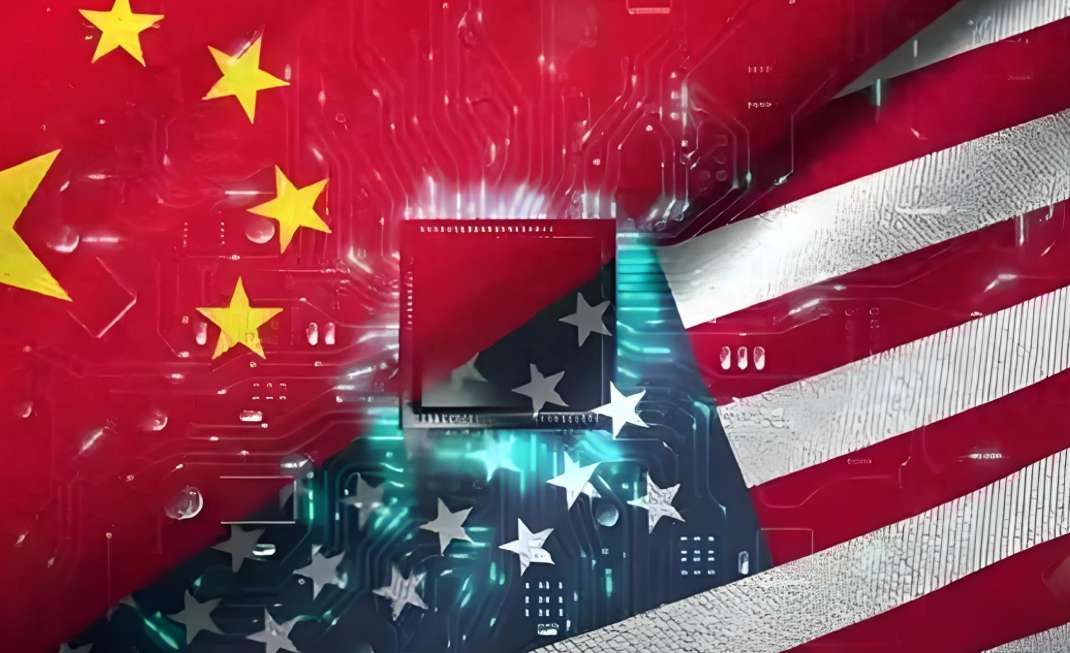The current technological rivalry between China and the United States, often referred to as the "chip war," can be traced back to 2018 when the U.S. imposed strict sanctions on two prominent Chinese tech giants: Huawei and ZTE. These corporations have gained significant traction in the telecommunications sector, challenging the long-standing American technological hegemony. Huawei, in particular, has climbed to the forefront of the 5G technology race, causing alarm in Washington and raising concerns over national security.
In response to perceived threats to its dominance, the U.S. has aimed to restrict the supply of semiconductor chips, thereby hindering the growth of Chinese tech enterprises and safeguarding its own technological interests. This strategy underscores a broader approach from the U.S. to maintain its lead in the high-tech arena, particularly in sectors crucial for future advancements such as artificial intelligence, electronic design automation, and semiconductor manufacturing.
The American strategy has not been confined to sanctions against particular companies; instead, it has extended to a comprehensive framework of export controls. The U.S. has been proactive in rallying allies like Japan and the Netherlands to create a consortium aimed at constricting China's access to critical technologies, components, and raw materials essential for semiconductor production.
In the face of these challenges, Huawei and ZTE have taken matters into their own hands. Instead of succumbing to the penalties imposed upon them, both companies embarked on serious efforts to enhance their own chip research and development capabilities, striving to reduce their reliance on American technology. This has involved a concerted push toward self-sufficiency through innovation, close collaboration with domestic partners, and investments in next-generation technologies.
Recent developments have showcased Huawei's significant advances in the semiconductor domain. The company has focused extensively on developing its proprietary technologies, shifting its strategy to include the creation of a fully integrated industrial chain. For instance, Huawei has intensified its efforts on mature process chips, achieving remarkable milestones with technologies like 28-nanometer and 14-nanometer processes, which are crucial for sectors like automotive electronics and the internet of things.
A particularly notable statement from Huawei’s Yu Chengdong reflects this ambition. He described the evolving landscape as a reflection of historical responsibility, underscoring Huawei's commitment to its HarmonyOS, aiming to create a thriving ecosystem with a target of 100,000 applications by 2025 to signify maturation. These bold objectives indicate Huawei's drive to solidify its position in the tech industry, fostering an environment that promotes indigenous innovation.

The trajectory of Huawei and its counterparts paints a compelling narrative of resilience and adaptability. In merely a few years, Huawei has spearheaded significant advancements alongside various Chinese tech firms, effectively narrowing the gap in both chips and operating systems that once seemed dauntingly wide.
Moreover, the long-term repercussions of the U.S.-instigated chip war are likely to create a paradoxical outcome—one of failure for the U.S. strategy. The semiconductor industry operates on a complex, intricate web of global supply chains that interlink various countries. By attempting to sever China's connections through unilateral sanctions, the U.S. not only endangers Chinese enterprises but also disrupts numerous global partners—countries that include major players like Japan, South Korea, and European nations that hold vital positions in this global mosaic.
For instance, take South Korea’s semiconductor industry as a case study. Despite American efforts to court South Korean behemoths like Samsung Electronics and SK Hynix, there remains a recognition that China constitutes the largest market for semiconductors globally. Thus, the trajectory of South Korean semiconductor development hinges greatly on continued access to the Chinese market.
Recent figures released by the Korean Customs Service illustrate this interconnectedness further. In the first ten days of the current month, Korea's exports surged to $16 billion—a 3.8% rise over the same period last year—marking semiconductors as a standout performer contributing $3.2 billion, a 23.8% increase. These statistics not only highlight Korea's reliance on the semiconductor sector but also signal the paramount importance of the Chinese market in sustaining growth.
Interestingly, many international companies are beginning to pivot towards diverse development strategies as a response to this geopolitical tension. Businesses are increasingly looking to foster collaborations with China's semiconductor sector, breaking away from sole reliance on the American market and technology.
For example, several European semiconductor firms have recently reached agreements to establish joint semiconductor manufacturing ventures in China. This shift is emblematic of a broader sentiment that resonates not only in Europe but within other regions hesitant about a unipolar influence in the semiconductor industry, reflective of a cooperative spirit and sense of balance among global players.
Moreover, recent trends indicate a significant ramp-up in China's domestic chip production capabilities. By the end of 2024, forecasts suggest that China's semiconductor industry will experience a remarkable reduction in chip imports, plummeting by 21.02% year-on-year. This trend indicates a concerted effort toward self-reliance, diminishing dependence on external semiconductor imports as localization strategies take root.
Huawei serves as an illustrative example in this landscape of growing independence. The chips employed in their Mate 70 series smartphones have reached a breakthrough of 100% domestication—an indication of the strides made in the domestic semiconductor landscape. By the end of 2024, China's market share in the global chip manufacturing sector is projected to skyrocket to 30%, positioning the continent as a formidable force within the international semiconductor supply chain.
This unfolding narrative reveals not just a profound shift in the dynamics of the semiconductor industry but also showcases the rise of a self-sufficient China that is committed to redefining its role within the global tech ecosystem. As the geopolitical chess game continues, the implications of these developments will resonate far beyond national borders, reshaping the technological landscape for years to come.